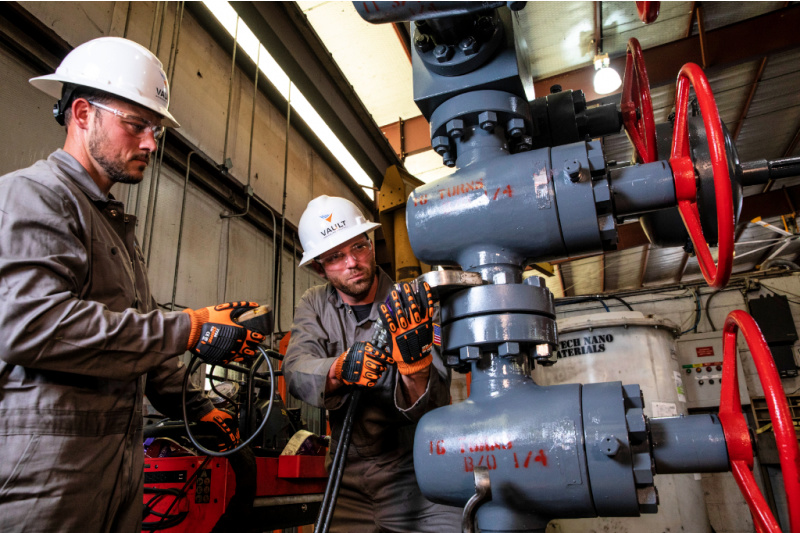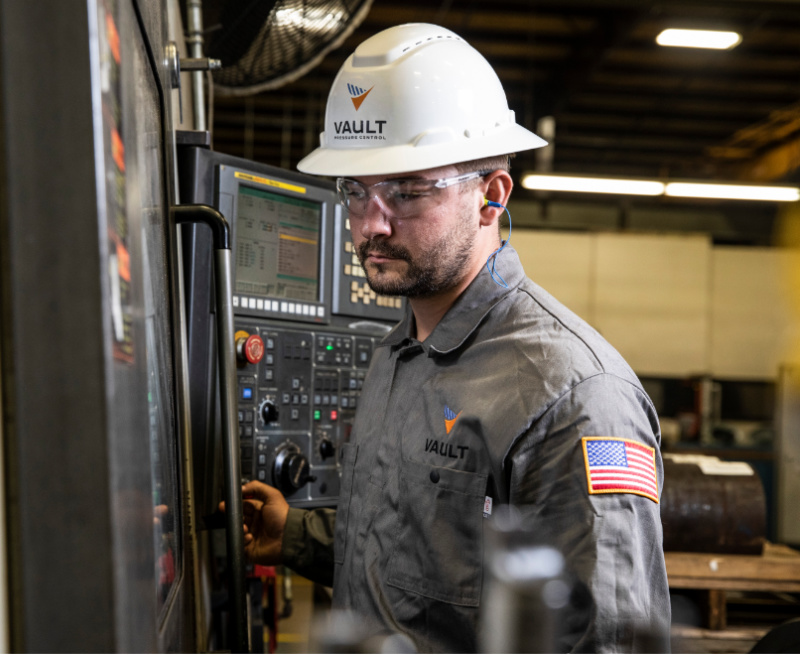Presented by:

[Editor's note: A version of this story appears in the February 2021 issue of Oil and Gas Investor magazine. Subscribe to the magazine here.]
Private equity firms’ interest in the oilfield services (OFS) space traditionally meant investing in hard assets: rigs, frac pumps and trucks, a sand mine or downhole equipment. Firms always focused on companies with emerging technologies that advance E&P efficiency, including the abilities to drill or complete a well more accurately and faster.
A lot of debt flowed into the industry as private equity-backed startups developed new technology or sought to buy divisions from larger companies such as Halliburton.
“That’s all come unhinged,” said G. Allen Brooks, managing director of PPHB LP, a Houston boutique focused on oilfield services. “The overriding environment for private equity in the service sector right now is trying to make their companies profitable. And, private equity itself is getting beat up, because it’s suffering not only from the industry downturn, but from the fact that the funds they can raise [from limited partners] are drying up.

“The marketplace has changed and is going to be smaller.”
Combine these travails with the fact that the oil and gas industry in general is slowly figuring out what its new role in the energy transition will be, and you’ll find that private equity firms are expanding their scope of investments.
“We’re not going to own the resource, but we’ll invest in companies that are helping to do anything related to production,” said one source, who also invests in alternative energies. Increasingly, that means private equity is no longer turning to hard iron and downhole tools, and instead is considering anything digital, ranging from technologies involved in the supply chain leading up to a completion, to data management or software as a service (SaaS) concept.
“All of our companies are focused on enabling the efficient production of energy,” said Ryan Gurney, managing partner of Cottonwood Venture Partners. The firm has made 10 platform investments in energy technology including MineralSoft (sold to Enverus in 2018). Cottonwood closed its second energy technology fund at $64 million in December 2020 and has raised approximately $100 million since its launch in 2017. Cottonwood closed its inaugural Digital Oilfield Fund at $32 million in October 2018.
Private equity funds focused on oilfield services took a serious pause during the bleak atmosphere of 2020. Now these funds will not open their coffers for new platforms. Rather, they may inject capital to stave off threats to their existing portfolio companies amid a wave of oilfield service bankruptcies, not to mention the near collapse of activity in the frac equipment and sand business lines. Some are making acquisitions of tech divisions being hived off the giants like Halliburton Co., Baker Hughes Co. or Schlumberger Ltd.
The 2020 downturn threw into stark relief a sad truth: The traditional OFS sector is suffering a glut of capacity. It has been overcapitalized for a long time, even before the pandemic, so a wave of consolidation needs to be underway. The total market for oilfield services keeps shrinking; companies must battle for market share amid the surfeit of equipment, clients demand discounts and stronger players are seeking scale.
Despite these hurdles, and a pullback in buyout activity for new OFS platforms, private equity firms continue to be active in OFS, albeit in new ways.
“For example, distressed M&A activity or debt-for-control investment activity is elevated,” said Sanjiv Shah, managing director at Simmons Energy, a division of Piper Sandler & Co. “As such, firms that are active in new money OFS investing are not necessarily the same firms that have been active historically,” he told Investor.
Tech software is the allure
For a while now, the most prominent private equity firms traditionally active in the E&P space have also been investing in energy technology—it makes sense, especially during the downturn as finding new efficiencies has become even more important.
“People don’t want to buy hard assets like drilling rigs or pressure pumping equipment. They want to back AI, software, anything digital,” said PPHB’s Brooks. “What we’re finding is that people are innovating in things like managing access to remote sites. Somebody pulls up in a truck … and you keep track of all the vendors and contractors out there. Are they supposed to be there? What are their credentials? Are they trained in safety? These kinds of things are percolating throughout the industry.”

Quantum Energy Partners, a leader in providing equity to E&Ps, has always made some investments of $5 million to $75 million in services or technology; these checks are typically smaller than what Quantum would provide to an E&P client, which has been anywhere from $300 million to $500 million. (Counting follow-on investments, the firm has up to $1 billion invested in some of its E&P portfolio clients, because they are building toward a strong exit later.)
“In oilfield services, however, the risk can be higher, [so you might advance less capital]. But, you can get a higher return, so you might make three to six times your money. It’s more akin to what venture capital firms do,” explained CEO Wil VanLoh.
Lately, Quantum has gone all in on digital applications for energy. “Investing in a sand company or a drilling rig, that doesn’t get us as excited. But to create an ecosystem to capture, clean and store data, that’s a theme you’ll see more and more with us. We’ve really invested heavily on data science in the last three or four years, both internally, which has helped us in our own investing process and in our portfolio companies. We hired a chief technology officer this past year who was with Chevron to take us to the next level.”
Quantum recently partnered with another private equity firm, Global Reserve Group, to infuse $11 million into Datagration Solutions Inc., which provides PetroVisor, a software for the upstream. Datagration is the sixth energy technology venture capital investment that Global Reserve Group has made with Quantum, said Jeffrey Harris, founder of Global and formerly a senior partner and principal for 29 years with Warburg Pincus.
“We’ve always looked at service companies. At any given time, we might have one or two of these per fund. It’s a unique business where we see growth trends in ‘smart iron’ as opposed to ‘dumb iron,’” said VanLoh. Speaking more broadly of the devastation suffered by the OFS sector in the past year, he added, “I do think, be careful how much you beat them up, because we need these companies if we’re going to have an upstream business.” Across Quantum’s E&P portfolio, about 22 rigs are running on average all the time, so he certainly knows what the OFS sector contributes.
Two years ago, Quantum invested in RigUp, which provides contract labor to the oil and gas industry. But where once about 90% of its business was in oil and gas, today that’s only about 30%, as RigUp expanded into residential, commercial and industrial sectors. It’s a common theme as capital providers and service companies themselves diversify away from traditional equipment and services to digital, data management or to other sectors such as the downstream and industrial.
Tech takes many forms these days as the energy industry evolves. In December, NGP filed to take public its second tech-oriented SPAC, Switchback II Corp., which is looking “to evaluate targets across numerous sectors, including energy technology, clean and renewable energy infrastructure, … energy efficiency and battery storage…” and other energy-related opportunities, according to the S-1.
NGP IPO’d Switchback I in July 2019 (NYSE: SBE), raising $345 million. In September 2020, Switchback pulled the trigger, agreeing to buy ChargePoint Holdings Inc.—one of the world’s largest public EV (electric vehicle) charging networks. (That deal was scheduled to close by December 31.)
This transaction illustrates what private equity firms are doing to expand their view of what is investable, based on what they think the future of energy may hold. According to Simmons’ Shah, “In fact, many traditional OFS-oriented investors are now focusing on a broader definition of energy that includes downstream/industrial, power/utility, infrastructure and alternative/new energy exposure.”
They are also taking a page from history: The people who made the most money during the California Gold Rush were not the prospectors. It was merchants, the middlemen who sold the prospectors picks, shovels, denim jeans and whiskey.
Private equity pivots

White Deer Energy is an example of how private equity pivots. Founded in 2008, it has $2.7 billion of assets under management and is still investing out of Fund III, which closed in 2018 at $557 million. Its mandate is broader now that the firm exited the E&P space altogether; it has not done any E&P deals since 2016. However, it continues to own a wireline company, a pressure control equipment rental company and a workover rig entity engaged in more conventional OFS businesses. But going forward it is expanding well beyond these traditional concepts, into equipment and services for refineries or for the budding EV industry.
Partner Joe Bob Edwards said that when he started in the business in the late 1990s, the way to make money was to consolidate E&P assets and companies. Then shale came along, and for about 15 years the way to make money became growing E&Ps at all costs. Today, he says, the energy world has changed once again, and it’s in the early stages of OFS consolidation. The new growth capital opportunities are in the energy transition or alternatives space.
“Most of what we’ve done lately is what we call the energy supply chain,” he said.
“That’s OFS, midstream infrastructure and, increasingly, downstream and industrial equipment and services, such as anything that helps refineries, and anything involved in the energy transition. To us that means any form of power production or alternative fuels such a solar, wind, batteries, ethanol or biodiesel.
“We buy companies that assist in producing all of the above,” Edwards said.
Its most recent deal in 2020 was to buy, in an auction process, an over 90% stake in EV Infrastructure, a business that designs, builds and installs electric vehicle charging infrastructure. To that end, it helped one of its clients, FedEx, convert a truck hub to EV from diesel, analyzing what the hub would need in terms of power and design.
“For the last couple of years, even before COVID-19, we recognized that this is a trend that’s happening, and we said, ‘How can we capitalize on this?’”
Edwards said the deal was relatively smaller than most other private equity firms might be interested in, but White Deer believes EV Infrastructure will grow, partnering with the management team that also put in some equity. Earlier, White Deer invested in a Houston company, Unicat, which manufactures catalyst materials used in large-scale chemical processes such as those found in a refinery.
“These deals are indicative of how broadly we are looking at opportunities in energy,” Edwards said. “I think this is an emerging trend among the energy private equity universe, which itself is in transition. We cannot ignore that the world is changing. Every firm has to come to grips with this.”
Consolidation waves
Simmons’ Shah noted that there is what he calls “a huge” installed base of private equity-backed OFS companies of vintages that exceed five years. This raises the question, should they exit now, and how can they exit? Although valuations are down, are they being forced to exit by the downturn?
“The case for consolidation has rarely been stronger,” Shah said. “With a lack of cash exit options at acceptable valuations, private equity-backed portfolio companies are more open to combining with each other and into public vehicles. While these transactions don’t represent true immediate exits, they provide the best path to value creation/recovery.”
Shah said that bank debt appetite continues to be apathetic toward the OFS sector, which limits the options an OFS company has, but on the other hand, he said we might see more private equity-led PIPES (private investment in public equity) or heavily equitized corporate carve outs.
The folks at Pelican Energy Partners also said the name of the game is consolidation, not startups or growth equity deals. “We are very actively working on several consolidation deals,” said partner Mike Scott.
In November, Pelican purchased the Baker Hughes wellhead business, combined it with one of its existing portfolio companies, and rebranded the new entity as Vault Pressure Control. This was the largest company Pelican has ever purchased.

“The opportunity was made available because of the magnitude of this downturn. We are seeing a tectonic shift in the OFS company landscape,” Scott said. “Several of the larger players are selling business units that they don’t want to deal with anymore. Those are generally getting purchased by competitors in consolidation transactions, which is a very healthy thing for the industry and needs to happen.
“We are currently in several conversations with other OFS players that are potential consolidation transactions with several of our portfolio companies. Private equity is taking a leading role in this wave of consolidation. We have seen private equity funds combine their own portfolio companies; in fact, we recently just combined two of our portfolio companies where there was a very good strategic fit.” Is there any way to create a good exit these days? To create value? Everyone we spoke with said the same thing: The short answer is ‘no.’ This situation is the greatest headwind blowing against the oil and gas sector today, especially for OFS companies.
Nevertheless, several consolidations were announced in 2020 amongst portfolio companies of different private equity funds, such as Innovex Downhole Solutions Inc. (backed by Intervale Capital LLC) agreeing in November to combine with Rubicon Oilfield International (backed by Warburg Pincus) in early 2021. Covenant Well Testing (backed by NGP) has combined with Stuart Pressure Control (a White Deer Energy client). Covenant is the surviving company.
Smashcos between entities backed by the same private equity firm are also taking place as the OFS sector adapts to tough conditions. In July, The Woodlands, Texas-based EnerCorp Engineered Solutions combined with Pro Oil & Gas Services LLC of Houston, which provides well flow management and well construction products in the Permian and Haynesville plays. Both companies are backed by Intervale, which since 2006 has invested in over 50 companies engaged in infrastructure, energy and industrial end markets.
Intervale also sold Torc Sill Foundation LLC, based in Pasadena, Texas, to a new entity primarily controlled by White Deer in October. Torc Sill provides engineered piles and anchor foundations to energy, power and industrial clients.
Dollars available
Pelican Energy Partners’ third fund is only about half deployed, so plenty of capital is left for new opportunities in this disrupted market. “We have kept capital available in our first two funds as well,” Scott said. “In fact, the Baker Hughes wellhead transaction, which is now branded as Vault Pressure Control, was done out of our second fund because that’s where our portfolio company resided, which got consolidated into Vault. We were fortunate to have enough capital available in our second fund to facilitate that transaction, keeping our third fund’s capital available for other opportunities.”
The thesis at Cottonwood Venture Partners is that energy is going through a renaissance in terms of digital adoption yet, to date, not all that much capital has been invested in energy software, said Gurney. “We have three criteria: software as the primary product or service, customers must be in the energy space, and we invest in companies that are post revenue.
“When prices are low, and oil and gas companies, and energy broadly, have reduced headcount, how do they handle jobs? Software. It enables operators to do more with less. You have 25% to 30% fewer hands across the industry, yet companies are looking to increase activity in 2021.”

Cottonwood has made 10 investments since inception and typically holds for three to five years. Gurney noted that the buyer universe has changed for exits, with stalwarts such as Halliburton and Schlumberger already owning various large software platforms.
Its most recent deal was to back HUVR, which manages inspection data (including drone video footage) for equipment in heavy industries such as wind turbines and downstream refineries. ExxonMobil is a HUVR customer.
“It’s hard to repurpose a frac pump,” Gurney said, whereas software applications or data technologies for the oil industry can be applied in other industries.
Scott said at the moment, Pelican is not purposely seeking out green technologies as this doesn’t fit its mandate or strategy. “Green technologies, or any energy technologies, that are early stage and don’t have an established business footprint are too risky for us to expose our investment funds to, as we don’t want to take venture risk in any of our investments,” he said.
Even if it were to consider downhole technology deals, Pelican needs to see that the business opportunity in question has arrived at the growth equity stage—meaning it already has multiple customers, repeat business and a track record of growth. He said opportunities in more mature companies with a green technology product offering don’t screen very well in Pelican’s return analysis. “We would certainly be open to those investments, but we have not found any that have met our return criteria,” he added.
The outlook
Conceptually, Scott said Pelican believes 2021 will be a good time to put money to work in the OFS sector. “We expect that it will be a long, slow ramp of recovery that will go beyond 2021, so it would be getting in closer to the bottom than the top. But investing in startups is a different question and we probably won’t be doing many growth equity investments in 2021,” he said.

“The market doesn’t need any more capacity. It needs less capacity, which will happen through attrition and consolidation. So, we don’t want to be adding capacity in any aspect of the oilfield sector today.
“That means an investment target needs to have a pretty revolutionary product that will induce customers to leave their current solution, which is most likely already paid for and a sunk cost, and be willing to spend fresh capital on something they already have a solution for. Those sorts of breakthrough opportunities are few and far between. I would guess we might see one or two deals that fit those parameters in the entire year of 2021.”
It’s a fascinating time to be navigating the oil and gas sector. “We are certainly seeing stronger headwinds than we have since the 1980s due to increasingly negative sentiment on fossil fuels, as well as pandemic-induced demand destruction, some of which may become permanent based on consumer behavior shifts,” Scott said. “While we believe these factors will have a significant impact on the long-term trajectory of the oil and gas sector, we also believe that cognitive bias exaggerates short-term causes on long-term effects.”
For decades, growing oil and gas demand has been highly correlated with global population and GDP growth, and that dynamic continues for several years, experts say. But changing attitudes have created new chances to invest, he said.
“Since there are now many people who no longer believe that [oil and gas demand shares a positive relationship with global population and GDP], we are seeing much more flexibility and capitulation amongst current asset owners. As a result, we are finding more opportunities than we have for quite a long time. We will continue to be active investors throughout the next year or two while these conditions persist,” Scott said.
Recommended Reading
EOG: Utica Oil Can ‘Compete with the Best Plays in America’
2024-05-06 - Oil per lateral foot in the Utica is as good as top Permian wells, EOG Resources told analysts May 3 as the company is taking the play to three-mile laterals and longer.
E&P Highlights: May 6, 2024
2024-05-06 - Here’s a roundup of the latest E&P headlines, including technology milestones and new contract awards.
US Oil, Gas Rig Count Falls to Lowest Since January 2022
2024-05-03 - The oil and gas rig count, an early indicator of future output, fell by eight to 605 in the week to May 3, in the biggest weekly decline since September 2023.
Pemex Reports Lower 2Q Production, Net Income
2024-05-03 - Mexico’s Pemex reported both lower oil and gas production and a 91% drop in net income in first-quarter 2024, but the company also reduced its total debt to $101.5 billion, executives said during an earnings webcast with analysts.
Chouest Acquires ROV Company ROVOP to Expand Subsea Capabilities
2024-05-02 - With the acquisition of ROVOP, Chouest will have a fleet of more than 100 ROVs.




